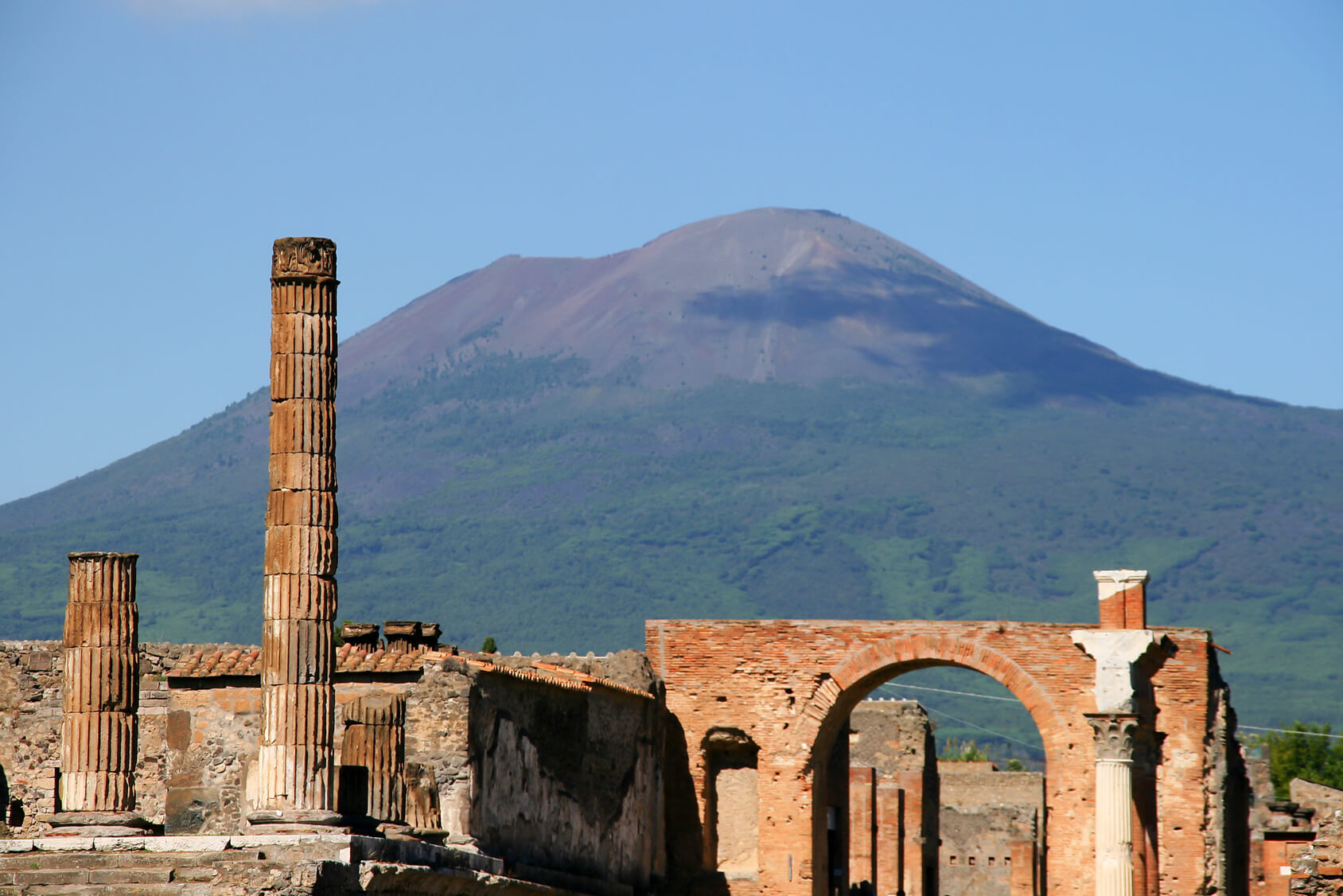Prepare to be amazed as we delve into 10 facts about Pompeii volcano eruption and the ancient city's fascinating history. From its mysterious origins to the fateful day when Mount Vesuvius unleashed its fury, these Pompeii facts will transport you back in time and reveal the captivating story of one of the world's most famous archaeological sites.
1. A cool fact about Pompeii's origins: it was originally Greek
Pompeii was famously a Roman city, right? Well, yes, but the Romans might not have been there first – some of the oldest structures unearthed in Pompeii appear to have been designed by ancient Greek settlers.
2. The mysterious date of the Pompeii volcano eruption
It’s generally accepted that the devastating eruption of Vesuvius happened in 79 AD. For a long time, it was believed that the date of the disaster was August 24th, based on a written record made by Pliny the Younger – a Roman writer who witnessed the event from across the Bay of Naples. But archaeologists have found that the clothing and food preserved in the ash suggest a colder season, possibly October or November. Debate continues…

Mount Vesuvius overlooks the ruins of Pompeii
3. A surprising fact about the people of Pompeii is that they didn’t know the Vesuvius was a volcano
This one is up for debate, with some historians claiming that Pompeii’s residents knew exactly what they were dealing with – but others say that as it hadn’t erupted for so many years prior to 79 AD, local residents could easily have thought Vesuvius was just another mountain!
4. An unfortunate fact about Pompeii: the wind usually blows the other way
The people of ancient Pompeii really were unlucky. On almost any other day, the prevailing wind would have blown the ash from Vesuvius away from them – but on the day of the eruption, it just so happened that the wind was blowing directly towards Pompeii.














